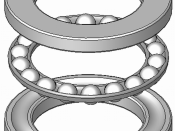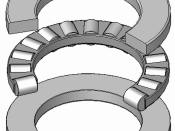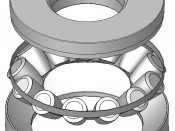A tapered roller bearing from a manual transmission
Have you ever wondered how things like inline skate wheels and electric motors spin so smoothly and quietly? The answer can be found in a neat little machine called a bearing.
The bearing makes many of the machines we use every day possible. Without bearings we would be constantly replacing parts that wore out from friction. In this edition of HowStuffWorks, we'll learn how bearings work, we'll look at some different kinds of bearings and explain their common uses, and we'll explore some other interesting uses of bearings.
The Basics
The concept behind a bearing is very simple: Things roll better than they slide. The wheels on your car are like big bearings. If you had something like skis instead of wheels your car would be a lot more difficult to push down the road.
That is because when things slide, the friction between them causes a force that tends to slow them down.
But if the two surfaces can roll over each other, the friction is greatly reduced.
A simple bearing, like the kind found in a skate wheel
Bearings reduce friction by providing smooth metal balls or rollers, and a smooth inner and outer metal surface for the balls to roll against. These balls or rollers "bear" the load, allowing the device to spin smoothly.
Bearing Loads
Bearings typically have to deal with two kinds of loading, radial and thrust. Depending on where the bearing is being used it may see all radial loading, all thrust loading or a combination of both.
The bearings that support the shafts of motors and pulleys are subject to a radial load.
The bearings in the electric motor and the pulley pictured above face only a radial load. In this case, most of the...


